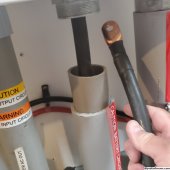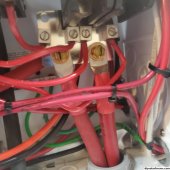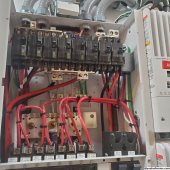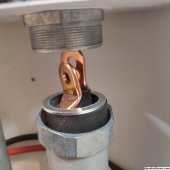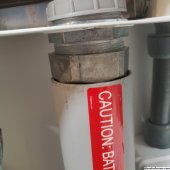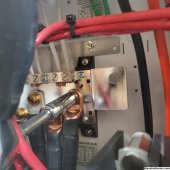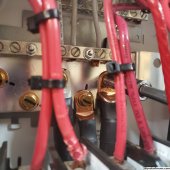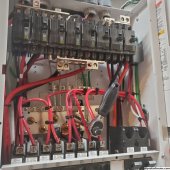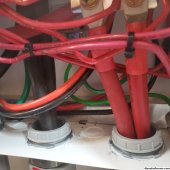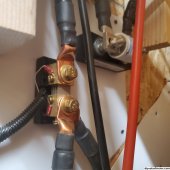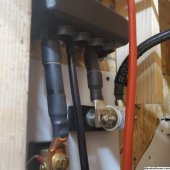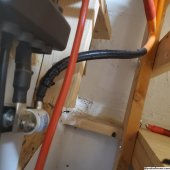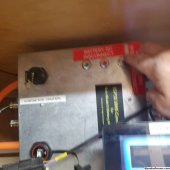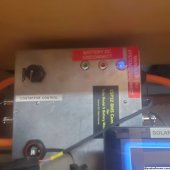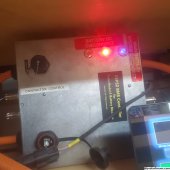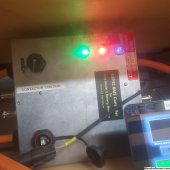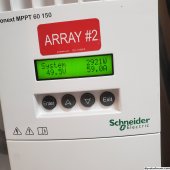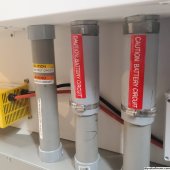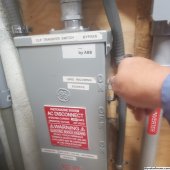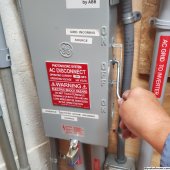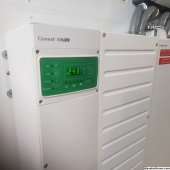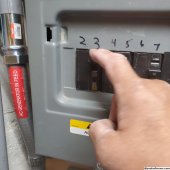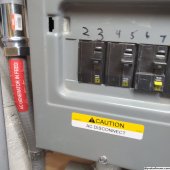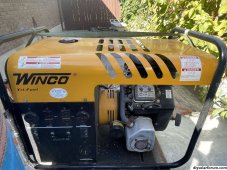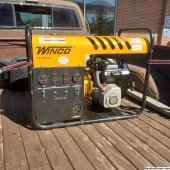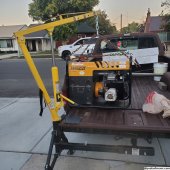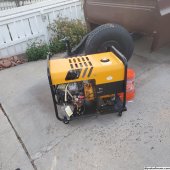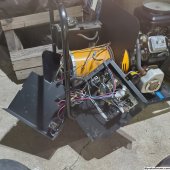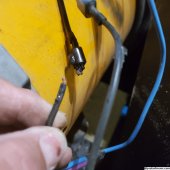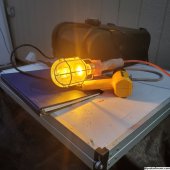Some posting from smokstack
https://www.smokstak.com/forum/threads/brushless-alternator-with-capacitor.16338/
Re: Brushless Alternator principles
As I understand it the capacitor introduces a phase shift between its associated stationary winding and the rotating "field" (rotor) winding to induce an alternating current that is rectified by the mentioned diodes in the field winding.
The rectified field current produces usable output voltage in the "load" stator windings and there you go.
Capacitor excited sets generally have poor V regulation as compared to sets with electronic regulation. The advantage is cost and not much to go wrong. Some industrial cap excited sets are "self current limiting" in that you can short the load output and the Voltage/current will drop to a level that will not "instantly" damage the sets windings. They are common on light carts and such.
Sometimes you can get more V by increasing the capacitor value. If the set is old, check the cap value before you do anything else. If you elect to change value be careful, as too much C will cause V to soar on no /light load and some loads that look capacitive to the set.
Re: Brushless Alternator principles
The capacitor is a common method of voltage regulation on smaller, less expensive generators. Coleman and many others use them - it's a common method on European generator ends. The capacitor stores a charge which balances a winding at an output voltage (say 120 volts). If the output voltage goes down, power flows from the capacitor increasing excitation, and if the voltage goes high, the capacitor stores excitation, causing the voltage to drop until they are in balance again. Very simple system, no brushes to wear out, no expensive voltage regulator needed. Works well. If the voltage is too high or low, check the capacitor. If it is rated at 25 microfarads, check it against a multimeter that can check capacitors. If the capacitor is within 2 or 3 uF of rating, it's ok. You can vary the output voltage by changing the capacitor. Try a 30 microfarad instead of a 25 and see how the voltage changes. It varies from generator end to generator end, but it may give you the boost you're looking for in output voltage.
Re: Brushless Alternator principles
Replace cap. with a new one. If the voltage is still low you can add caps in parallel to increase the value.
Kent
Re: Brushless Alternator principles
Well, two surprises: First, this thing has great voltage regulation. With the stock 25 uF cap, the no-load voltage was 111 V and it dropped to 110 V at a full 3 kW load.
The second surprise was that it takes a large change in capacitor value to increase the output voltage. With 40 uF, I get 120 V at no-load and 118 V at full load. All voltages are RMS, and I adjusted the governor as I changed the load to keep the frequency at 60 Hz.
I also experimented with adding a capacitive load to the main output, and it was stable - in fact, the output voltage dropped as I added capacitance there.
So, there must be some some drawback to this simple 'capacitor regulation' scheme, but I haven't seen it yet...
Re: Brushless Alternator principles
It sounds as if Kubota did their homework on the winding ratios in your set. As you found, the cap value isn't too critical in a "good" set within a reasonable range. Problems usually only show up when a certain critical cap value is exceeded.
Also in the case of a non-linear load such as a switching power supply,(if you run your computer off of one) plug an incandesent lamp or two in as well. I don't know that it would hurt anything, but the waveform looks "slanted" on a 'scope when only a switching-type load is applied.
The only troubles I have had with the several old Cap regulated sets I have owned are bearing issues and the cap going "open".
